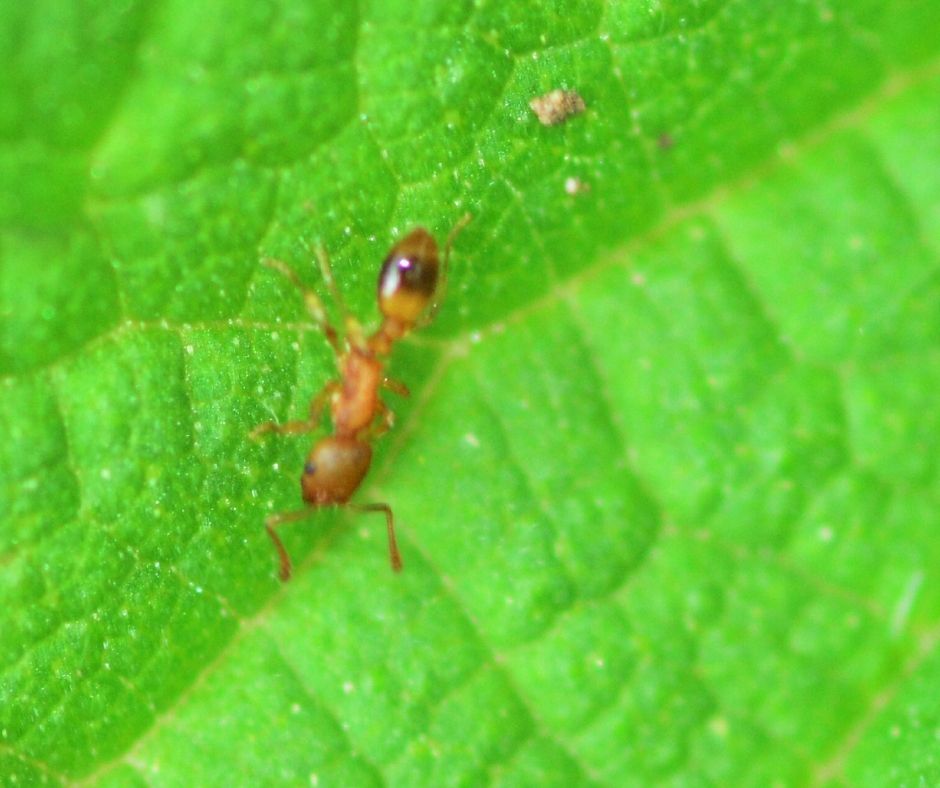
More Pest ID
- Acrobat Ants
- American Cockroach
- American Dog Tick
- Argentine Ants
- Asian Roach
- Bed Bugs
- Big Headed Ant
- Black Legged Tick
- Black Widow Spider
- Brown Banded Roach
- Brown Dog Tick
- Brown Widow Spider
- Cellar Spider
- Crazy Ant
- Dry Wood Termites
- Elongated Twig Ant
- Fire Ants
- Florida Carpenter Ants
- Florida Woods Roach
- Formosan Termites
- German Roach
- Ghost Ants
- Jumping Spider
- Lone Star Tick
- Oriental Roach
- Pavement Ants
- Pharaoh Ants
- Pyramid Ants
- Rover Ant
- Smokybrown Roach
- Subterranean Termites
- Thief Ant
- White-Footed Ant
- Wolf Spider
- Yellow Sac Spider
The Little Yellow Ant is native to Madagascar and was only recently discovered in Florida in 2017. As you may assume by its common name, the Little Yellow Ant is very small, but don’t let that fool you. It is an invasive species that has proven difficult to control and eliminate.
Researchers believe the ant made its way to our Sunshine State because of high tourism rates. Most likely, these ants hitched a ride on cruise ships and other modes of transportation. And due to our tropical climate, the Little Yellow Ant has thrived here in Florida.
In this Pest ID page, you will learn all about the Little Yellow Ant and what makes it unique and challenging to contain. And if you suspect an infestation, never hesitate to reach out to the Drive-Bye Exterminators to remove these pests from your home.
Appearance
The Little Yellow Ant is a distinctive species because of its tiny size and pale-yellow coloring. It is not commonly confused with other ant species. However, those less familiar with ant identification may think they look similar to Pharaoh ants and Yellow Crazy ants.
Use the following physical characteristics to identify the Little Yellow Ant correctly:
- About 2 mm long
- Tan or pale-yellow appearance
- Six legs
- Antennae
Behavior
These tiny ants form supercolonies with multiple queens and thousands of members. Fortunately, they do not sting or bite. However, they can infest homes in large numbers by entering through the smallest openings in a structure or catching a ride on pets or any material brought indoors.
Additionally, this invasive species has been observed displacing other ant colonies that previously dominated an area. This makes them a threat to our homes and the balance of our natural world.
Diet
One of the characteristics of the Little Yellow Ant that make it spread rapidly is that it is not picky about the food it consumes. Their first choice may be flower nectar and honeydew produced by aphids. However, they will also feed on other dead insects and household foods.
Habitat
Little Yellow Ants typically nest in dead branches on trees and twigs and fallen logs on the ground. They find their way into your home by first nesting in the garden or trees in your yard, then searching for food inside the house. If food sources are abundant indoors, they are likely to nest and continue to grow in numbers.
Inside the home, you can find them on kitchen countertops and near other exposed food, like pet food or animal feed stored indoors.
Do You Have a Little Yellow Ant Issue in Your Home?
Unfortunately, Little Yellow Ants can infest a home quickly and in large numbers. The following traits make this possible:
- Rapid reproduction
- Supercolony structure
- Tiny size
Being an invasive species, these traits are no surprise. Entomologist and University of Florida professor Thomas Chouvenc says, “It was just a matter of time before it showed up.” He further mentions, “It has a fantastic ability to spread because a whole colony can fit in a very small twig, plant debris, or potted plant.”
Once the ants have infested your home, the best thing to do is call your local pest control company.
Preventing Little Yellow Ant Infestations
Like with any pests, there are a few tips and tricks you can adopt to try to keep Little Yellow Ants out of the house. But keep in mind that these invasive ants may still get inside, regardless of your efforts.
- Trim tree branches and eliminate twigs and similar material from your property.
- Seal all cracks and openings in the structure of your home where these tiny pests can enter.
- Keep all food inside the home sealed in containers.
- Remove pet food and animal feed stored outdoors or ensure they are tightly sealed in pest-proof containers.
- Have your home regularly inspected for Little Yellow Ants by a trusted pest control company.
Drive-Bye Exterminators Eliminates the Little Yellow Ant
If you spot these invasive ants in or around your home, you want to act quickly to avoid a challenging infestation. The experienced staff at Drive-Bye Exterminators has successfully eliminated all kinds of pests and will do everything possible to remove the Little Yellow Ants from your property.
Additionally, because these ants are invasive, any infestation should be taken seriously. As mentioned before, they are a nuisance in our homes and a major threat to native ant species that contribute to the natural balance of Florida ecosystems.
Give the Drive-Bye Exterminators a call to eliminate the Little Yellow Ants infesting your home. We will get rid of the pests quickly and effectively and provide you with the best methods to keep them from returning.
And, as always, we highly recommend having your home inspected for pests each season. With a change in weather conditions comes a change in the pests that may be invading your home.






